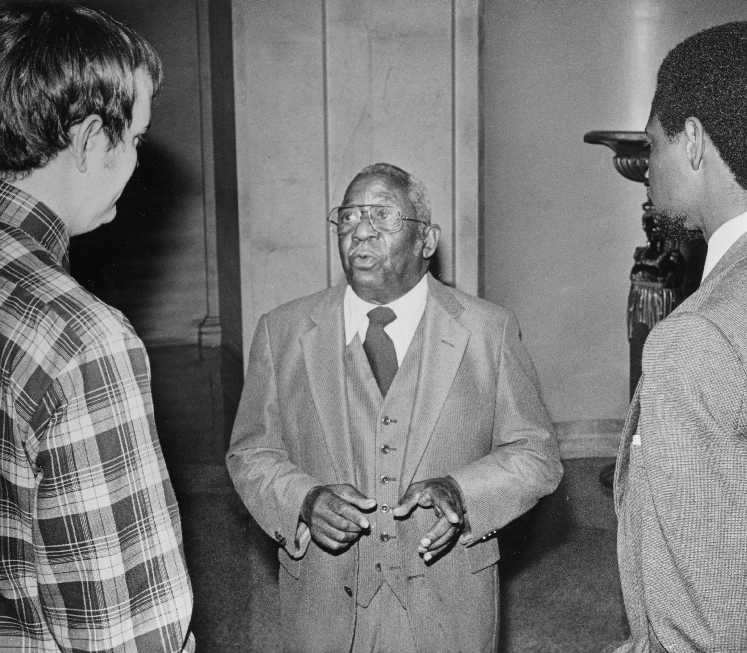- Home
- Court History
- African-American Experience & the Court
African-American Experience & the Court
What was the Florida Supreme Court’s role in enforcing federal Civil Rights legislation? Virgil Hawkins, a professor at Bethune Cookman College, decided to apply for admission to the University of Florida’s College of Law in 1949. The University rejected his application because he was Black. Hawkins appealed and the case reached the Florida Supreme Court the following year. The Court denied his appeal based on the grounds that although it was not open when he first applied, the state had subsequently launched a new law school for African Americans at Florida A&M College. They declared his case moot.
(He is pictured above in 1983.) All photographs on this page are courtesy of the Florida State Archives. Upcoming events
| The African American Experience and the Florida Supreme Court Since BrownThe African American Experience and the Florida Supreme Court Since Brown is a history of African American experience in relation to the Florida Supreme Court since Brown v. Board of Education (1954).
In going to take the Bar exam in 1952, Justice Leander J. Shaw, Jr. and Justice Joseph W. Hatchett each recalled the same story. They arrived at the hotel where they were supposed to take the test, went in, and sat down. Just moments before it was to begin, however, one of the proctors came over and told them and the other four African Americans candidates that they would have to leave the room. The proctor did not allow them to take the exam in the same space as their white peers because the hotel had a policy of segregation. Justice Shaw remembered that several of the black students left and never returned to take the Bar.
After earning his Juris Doctor from Howard School of Law, Justice Shaw was hired to teach law at Florida A&M University. After a few years, Shaw was admitted to the state Bar and set up practice in Jacksonville. What he experienced next, he had not anticipated. The clerk of a local court would not accept his pleadings. If he could not file the papers, he could not practice law.
This time the pleadings were accepted and filed. Shaw went on to serve with Justice Adkins. The story shows that everyday experiences with the law matter. Knowing this history enriches our understanding of the past and inspires our sense of civics in the present. “The African American Experience and the Florida Supreme Court Since Brown,” documents these important stories.
|
